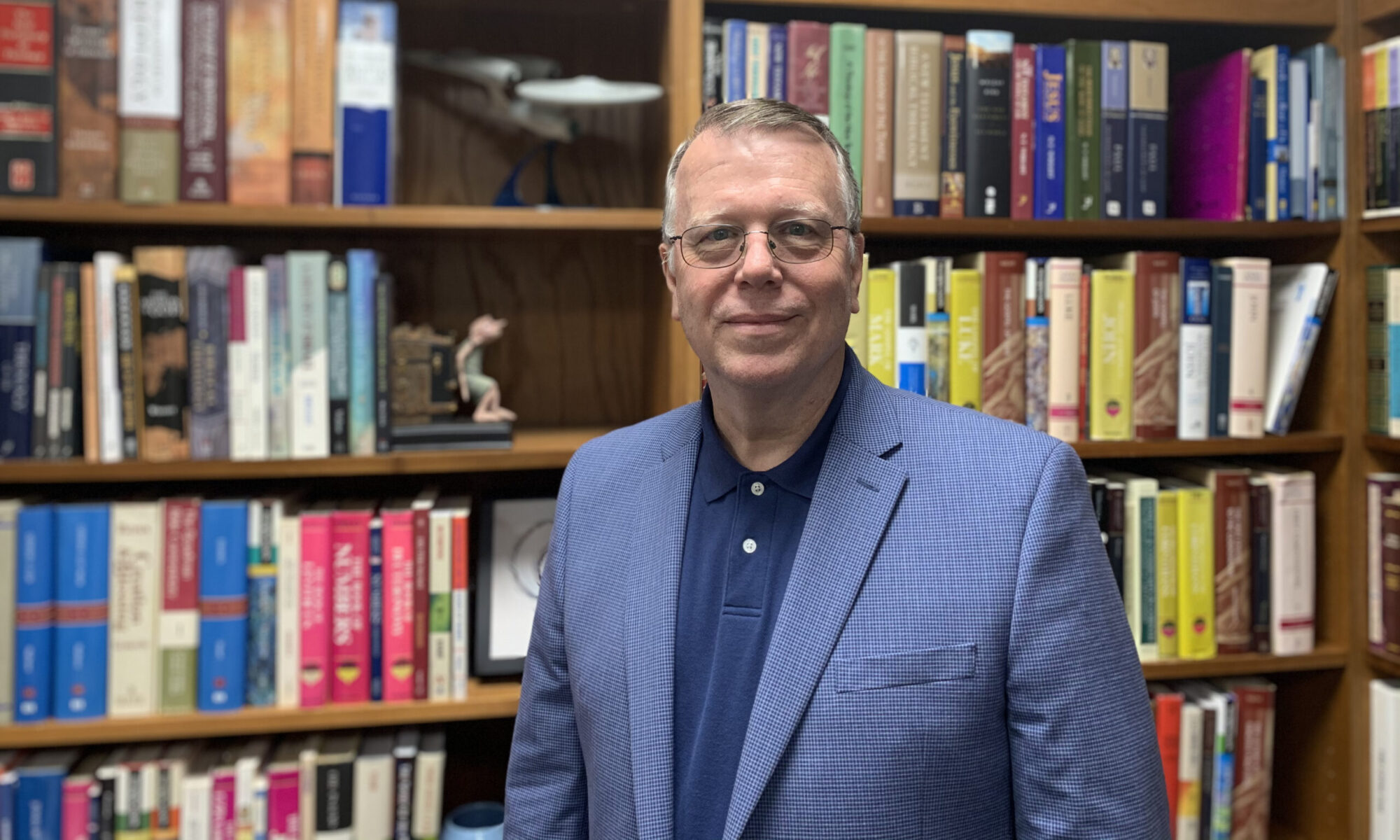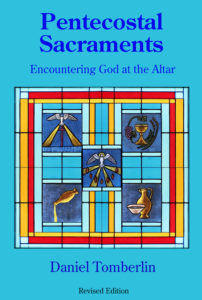In the Lord’s Supper believers are partakers of the divine nature. Through Christ’s priestly ministry, humanity is sanctified so we can receive the Spirit (Heb. 10:22; 1 Peter 1:2). The Holy Spirit comes through the intercession of Jesus (John 14:16-17; 15:26; 16:7; Acts 2:33). Through the Spirit, Christ comes to believers in the bread and cup.
Some early Pentecostals used a “drinking” metaphor when speaking of the essence of the Pentecostal encounter. David Wesley Myland said that being baptized in the Holy Spirit was like swallowing “God liquidized.” Pentecostals have affirmed that God’s energies can be transferred to material objects, or that God’s anointing is tangible, that is, “touchable.” Therefore, Pentecostals should have little difficulty in understanding the Lord’s Supper as worship in which the believer can touch and taste the divine.
Early Pentecostals embraced the Lord’s Supper with great devotion. A. J. Tomlinson wrote that partaking of the Lord’s Supper is one of “the most sacred and hallowed moments in the entire Christian life” (BD). Reporting on an observance of the Lord’s Supper, he wrote,
As the bread was broken and mention made of the broken body of Jesus, He seemed to manifest His presence in the midst. As I stood there in the presence of God and before the large audience with the broken bread; a piece in each hand, I seemed to get a broader view of the Christ and wonderful scheme of redemption than ever before (COGE, 15 Jul 1910).
Tomlinson’s reflection suggests an encounter that is much more than a memorial. Christ is present and the “broken bread” reveals the mystery of redemption. In an early Sunday school lesson “from a Pentecostal viewpoint,” the writer offers an explanation of how believers partake in the divine nature at the Lord’s Table.
As we come to the communion table, behind the symbol and the sign, we are to see our precious Savior and to appropriate and partake of Him. It is His desire to communicate Himself to us and as we partake in faith, discerning Him whilst we feed, we receive life for our spirits, souls, and bodies.
As the showbread was placed anew, every Sabbath, on the table before the Lord . . . so the Lord’s death was shown, or announced afresh at the Lord’s table [sic] on the first day of every week in the primitive Church. We need to continue steadfastly in the apostles’ doctrine and fellowship and in the breaking of bread (CE, 12 Jul 1919).
Roswell Flower, an early leader in the Assemblies of God, wrote an article on “the sacrament of the Lord’s Supper” that is wonderfully sacramental. Flower wrote that the Lord’s Supper is a “visible means” of promoting “the maintenance of spiritual life through personal communion with God” and that the Lord’s Supper feeds the believer’s “spiritual nature for a healthy growth in the Spirit.” When Flower writes about the cup and the loaf of the holy meal, it is evident that he believes there is more here than mere symbol. Concerning the cup he writes:
When the fruit of the vine was being partaken of, we have been conscious of melting, weeping, praising, and adoring among those receiving it . . . The fruit of the vine speaks to us of the spilled Blood in which we see our sins forgiven . . . We grasp it readily and our hearts are broken again and again in deep appreciation of the benefits of Calvary.
As he writes concerning the significance of the bread, his words portray a deep sacramental devotion:
. . . [the bread] was composed of fine flour. This speaks to the perfection of the humanity of Christ . . . And the flour was mingled with oil. The oil, of course, speaks of the Holy Ghost. Here we have the mingling of the perfect human nature of the Lord Jesus with the Divine.
As to the significance of the believer’s participation in this sacrament, Flower wrote:
Just as the manna must be gathered daily to sustain life, so we too must draw nigh daily to partake of Christ; we must hold daily communion with Him if we are to be sustained by His life . . . May God grant a deepening of our life of communion with Him, for a fuller manifestation of His life in us (PE, 2 Apr 1932).
Pentecostal leaders intuitively knew that there is a “presence” inherent in the holy meal. Baptism in the Holy Spirit brought into their lives a “real presence” that anointed the sacred acts of worship. Pentecostals believed that at the Table, through the power of the Holy Spirit, Christ is present. D. W. Kerr wrote:
There is nothing old or stale about this memorial feast, the fruit of the vine is not old, the shed blood is not aged, the bread is not stale, the Lord’s body is not a mere thing of the past, the way is new and living. The thing most striking about the character of the feast is its presentness, not its pastness or its futureness. It has a present aspect, there is a sign of warmth, the blood is not cold and coagulated but flowing fresh from the wounded side of Jesus . . . Here is the present tense of Calvary. We have come to a place of freshness, the result of Calvary. What is it? Life and life more abundant!
Faith can grasp mysteries that are unexplainable. Faith enters into a realm far beyond the sphere of understanding, and can extract the good and joy out of what soars high above our reasonings. We have no need to preach a doctrine of consubstantiation nor of transubstantiation; we just receive Jesus’ words and act on them. “Whoso eateth my flesh and drinketh my blood, hath everlasting life” (WE, 28 Oct 1916).
This is the language of mystery—a supernatural truth that defies reasonable explanation. William A. Cox wrote,
The communion is not a mere form. It is more than a memorial. I believe God has given us the fellowship of the holy communion so that we may draw nigh to Him, and not only draw nigh but also receive from Him the supply of our every need… [The Lord’s Supper] is a means of fellowship with God, through Jesus, by the Spirit, and we have a right to come to it expecting God to meet us. Indeed we have a right to expect to draw so near to God that whatever our need may be at that moment, whether spiritual or physical, He will supply it . . . when we eat of the divine body of the Lord Jesus, the living Bread which came down from heaven . To partake of the holy meal is transformative — “the very nature of the individual is changed . . . strengthened and empowered by the very life and body of the Lord Jesus Christ” (WE, 4 May 1918).
Cecil Knight, a Pentecostal leader of a later generation, wrote that the observance of Holy Communion should be a “vital part of the church’s life in worshiping the Risen Christ.” Knight believed the bread and cup are more than symbols. He wrote:
There is deep spiritual meaning in the Lord’s Supper. The participant does not merely look at the symbols; he receives spiritual food. Just as the bread and the fruit of the vine will nourish and invigorate the body of man, so Christ, through Communion, sustains and quickens the soul. When a Christian truly worships Christ in the Lord’s Supper, he is ministered to by the Holy Spirit, thereby receiving strength and a deep abiding peace (COGE, 22 Mar 1971).
Adapted from:

